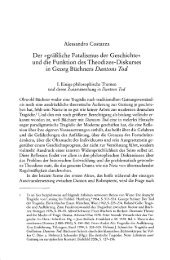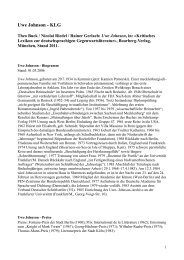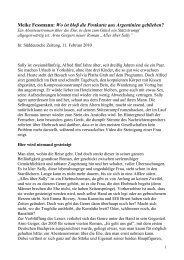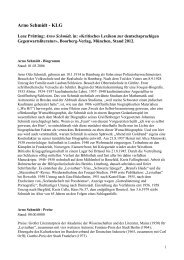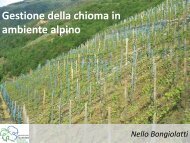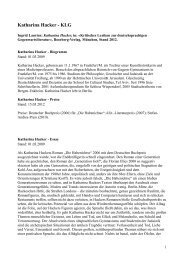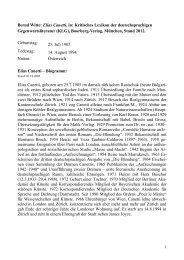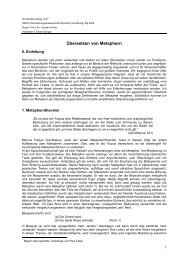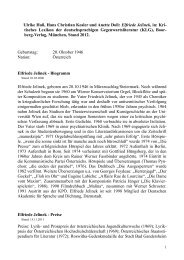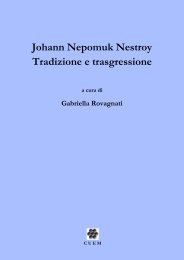Volume of Abstracts - Università degli Studi di Milano
Volume of Abstracts - Università degli Studi di Milano
Volume of Abstracts - Università degli Studi di Milano
You also want an ePaper? Increase the reach of your titles
YUMPU automatically turns print PDFs into web optimized ePapers that Google loves.
5 th Int. Workshop on Ice Caves (IWIC – V)<br />
Barzio (LC), Valsassina, Grigna and <strong>Milano</strong>, September 16 – 23, 2012<br />
<strong>Volume</strong> <strong>of</strong> <strong>Abstracts</strong><br />
the surroun<strong>di</strong>ng climatic, topographic, geomorphological and geological<br />
con<strong>di</strong>tions.<br />
Methods: Field campaigns are planned for spring and summer 2012. These<br />
include: geomorphological mapping, establishing ground and water<br />
temperature records, conductivity testing with a conductivity temperature<br />
depth (CTD) monitor, ground penetrating radar (GPR) transects to study<br />
the subsurface, analyzing ground temperature records, and analyzing<br />
satellite images <strong>of</strong> the area.<br />
Results : Results from a preliminary 2010 geomorphological mapping study<br />
conclude that lake water is actively draining into the subsurface during the<br />
melt season. The amount <strong>of</strong> water loss cannot be accounted for by surface<br />
drainage or evaporation loss alone, leaving the subsurface as the only<br />
option for the <strong>di</strong>stinct lowering <strong>of</strong> water levels. Shallow active layer ground<br />
temperature records are available for some locations around the lake<br />
system. The records shows that ground temperature from locations around<br />
the lakes are higher than in all other periglacial landforms with continuous<br />
permafrost in Svalbard. Results from the 2010 study and the temperature<br />
evidence established an interest to continue the project. Initial results from<br />
the 2012 field campaigns will be available by fall 2012.<br />
Preliminary Conclusions: Current results conclude that a karst system<br />
allows water to actively drain into a permafrost zone in the subsurface at<br />
Kapp Linné. The planned field measurements from 2012 will incorporate<br />
the earlier mentioned methods to draw further conclusions <strong>of</strong> the status <strong>of</strong><br />
the processes occurring both on the surface and subsurface at the karst<br />
lakes.<br />
FIRST THERMAL, MORPHOLOGICAL AND ICE TYPES STUDIES IN<br />
THE PEÑA CASTIL ICE CAVE (PICOS DE EUROPA, CANTABRIAN<br />
MOUNTAINS. NORTHERN SPAIN)<br />
Gómez Lende M. 1 & Serrano Cañadas E. 2<br />
1 Dpto. Geografía. Universidad de Cantabria. Santander, Spain. (manuelglende@hotmail.com)<br />
2 Dpto. Geografía. Universidad de Valladolid, Valaldolid, Spain<br />
The Picos de Europa is the highest massif in the Atlantic Mountain <strong>of</strong><br />
Southwestern Europe. It reaches the high mountain belt (between 1800-<br />
2650 m a.s.l) and it is characterized by a nivoperiglacial morphodymanic<br />
and a periglacial one above 2200 m.a.s.l, where the snow and cold shape<br />
inherited glaciokarstic landscape. Present day there are not glaciers, but<br />
stil remain three ice-patches. The topography, climatic con<strong>di</strong>tions, thick<br />
carboniferous limestones and significant altitude <strong>di</strong>fferences make possible<br />
an important endokarstic development, mainly vertical, in which some <strong>of</strong><br />
52




